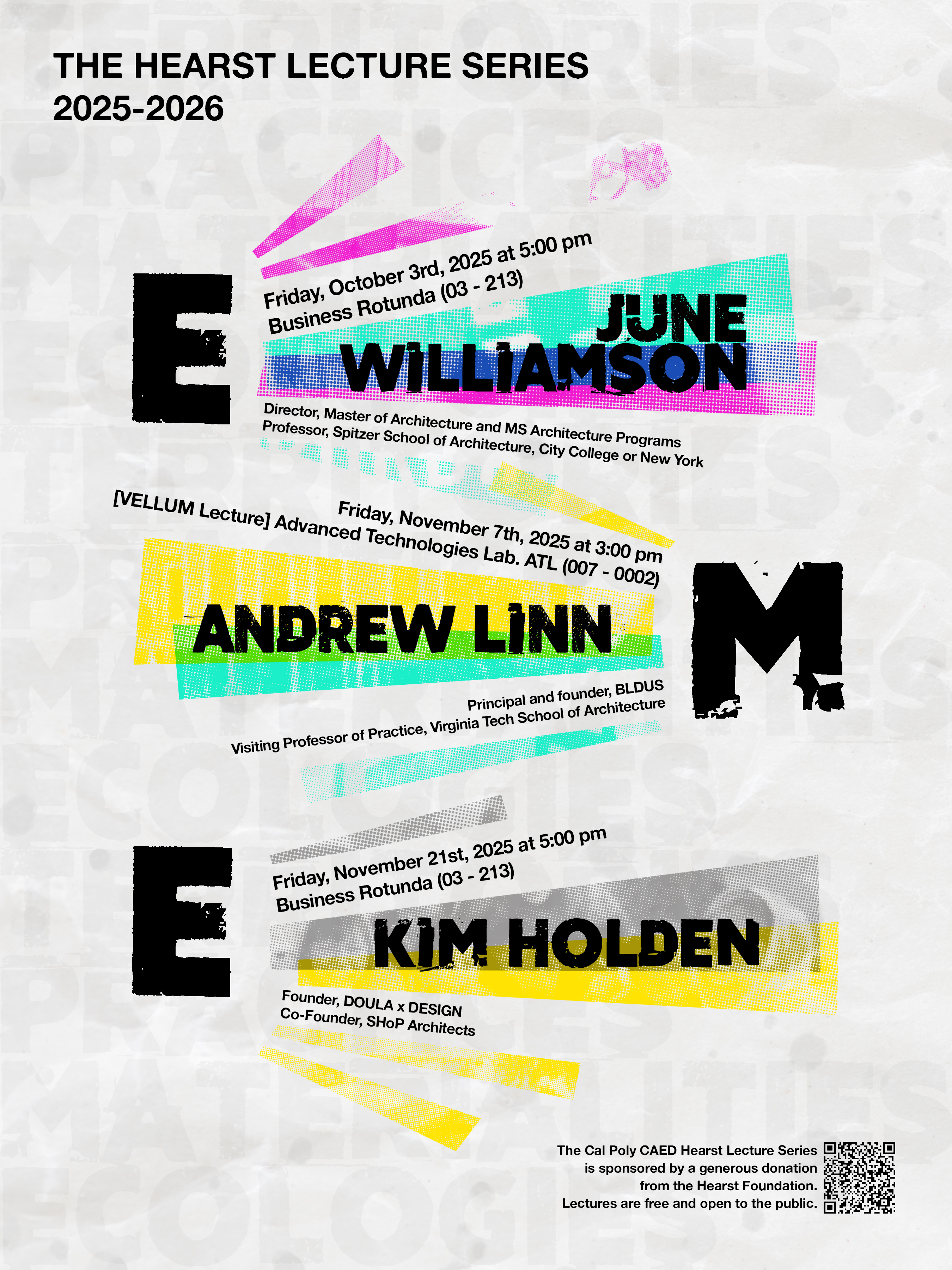Putting Our Heads Together to Reimagine Head Protection
by Brianna Grossman

Participants of the third annual V.E.S.T. hackathon present their hard hat and safety helmet prototypes to the rest of the group
Construction site hazards are a natural part of working in a built environment, which is why personal protection equipment is so essential to the profession. But when the safety equipment becomes a hazard itself, that is when the conversation shifts.
Construction management professor Stacy Kolegraff is leading that conversation here at Cal Poly.
The third annual Verifying Everyone’s Safety Together (VEST) Hackathon, an event spearheaded by Kolegraff and inspired by Cal Poly alum Lizette Galvez, centered around reimagining head protection. The hackathon works to address gender and racial disparities in the male-dominated construction industry and invites participants to redesign safety gear to be more physically inclusive.
In previous years, participants of the hackathon redesigned safety vests and porta-potties; this year, the focus was hard hats and safety helmets.
“The problem with safety equipment is that people don't use it the way that it's intended if it's uncomfortable,” Kolegraff said. “So, it's creating what we call a gender-based hazard.”
Industry standards are based on male standards, which often makes the equipment fit awkwardly for women.
“It's very uncomfortable and hot,” said Olivia Pisani about the general experience of wearing current standardized hard hats. Pisani is a fourth-year construction management major and the event coordinator for the third annual V.E.S.T. Hackathon.
“And there's really only one place where you can put your ponytail or bun and it's a weird low spot,” Pisani said.


1) Participants give feedback on different prototypes
2) Responses from the pre-hackathon survey posted on the wall for participants to read and consider for their prototype
Aside from there being no room for safe hairstyles, hard hats and safety helmets are often too loose, too small for people with headscarves and textured hair, prone to ripping hair out, and have poor ventilation.
These issues come straight from the responses of survey taken by participants before the day of the hackathon. Their responses were displayed along the wall of the Berg Gallery, where participants could see the shared experience of both women and men in the industry.
After some opening comments by Kolegraff, Pisani led group conversation around people’s personal experiences using safety equipment and what they wanted to see improved. Participants divided themselves into small groups, each sharing suggestions and brainstorming possible modifications.


1) Representatives from Rudolph and Sletten drill a hole in the back of a hard hat to create space for an up-do hairstyle
2) The final prototype for a proposed hard hat with an adjustable flap for different hairstyles and an insert for increased hair protection
One particular group, which included Brian Fink, senior safety manager at Rudolph and Sletten, focused on making room for an up-do hairstyle while still maintaining total head coverage. Fink said the lack of room for ponytails reminded him of his daughter who struggled with wearing softball helmets with her hair up.
Fink’s group sawed a small piece of the back of the helmet off and reattached it angling outwards to make space for a ponytail. Their helmet prototype also had softer material for the chin strap, a protective liner inside to protect from hair damage and an attachment for earmuffs.
Another group went a more technology-based route, making a “pro-tech” prototype. Their ideas included adding an air sampling tool which would alert the wearer when the air quality lowers, a body temperature monitor and an emergency pull which would notify the onsite managers that the wearer needs emergency assistance.
Going for a quicker fix, one group included an attachable bonnet and replaced the knob on the back with a soft tie to prevent hair damage.
“Some simple changes can make a big difference,” Pisani said.
Whether or not the group’s ideas are implemented into official industry standards is not the point, to Kolegraff, the event’s purpose is to bring awareness to the disparities in the construction industry. For Pisani, she hopes other women in the CAED felt welcomed and included.
“[The hackathon] shows them that they have a chance to be in leadership roles and host events themselves,” Pisani said.

Group photo of hackathon participants
No specific piece of equipment is locked down yet for next year’s hack, but Kolegraff suggested hacking safety harnesses, gloves or even power tools.
To participate in or support the 2025 V.E.S.T. Hackathon, visit their website.



